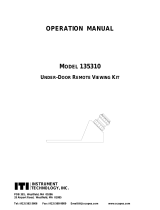
TDS3000C Specifications and Performance Verification
1-1
Specifications
This chapter contains specifications for the TDS3000C Series oscilloscopes. All
specifications are guaranteed unless noted as “typical.” Typical specifications are
provided for your convenience but are not guaranteed. Specifications that are
marked with the n symbol are checked in Performance Verification.
All specifications apply to all TDS3000C Series models unless noted otherwise.
To meet specifications, two conditions must first be met:
H The oscilloscope must have been operating continuously for twenty minutes
within the operating temperature range specified.
H You must perform the Signal Path Compensation described on
page 2--5 prior to evaluating specifications. If the operating temperature
changes by more than 10 °C, you must perform the Signal Path Compensa-
tion again.
Table 1- 1:
Acquisition characteristics
Characteri sti c
Description
Acquisition modes Sample (Normal), Peak detect, Envelope, and Average
Single Sequence Acquisition mode Acquisition stops after
Sample, Peak Detect One acquisition, al l channels
simultaneously
Average, Envelope N acquisitions, al l channels
simultaneously, N is settable from
2to256(or∞ for Envelope)
Table 1- 2: Input characteristics
Characteri sti c
Description
Input coupli ng DC, AC, or GND
Channel input remains terminated when using GND coupling.
Input resistance
selection
1MΩ or 50 Ω
Input im pedance,
DC coupled
1MΩ ±1% in parallel with 13 pF ±2pF
50 Ω ±1%:
VSWR ≤ 1.5:1 from DC t o 500 MHz, V/div settings ≥100 mV, typical
VSWR ≤ 1.6:1 from DC t o 500 MHz, V/div settings <100 mV, typical




















